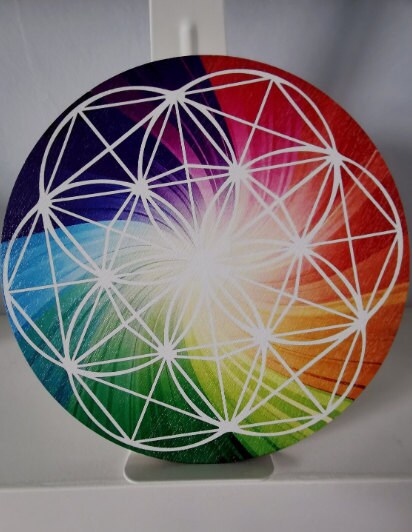The Seed of Life, has captivated thinkers, artists, and spiritual seekers for centuries. Found in religious art, ancient architecture, and even the fundamental structures of life itself, the Seed of Life represents creation, growth, and the interconnectedness of all things.
The Seed of Life is a geometric figure consisting of seven overlapping circles arranged in a hexagonal pattern. This pattern is deeply rooted in sacred geometry, a field of study that examines the mathematical principles underlying natural and spiritual phenomena. The origins of the Seed of Life can be traced back thousands of years, appearing in various ancient cultures, including Egyptian, Mesopotamian, and Indian traditions.One of the most famous depictions of the Seed of Life can be found in the Temple of Osiris in Abydos, Egypt. Engraved on a granite column, this pattern is believed to date back over 6,000 years. Many researchers believe that ancient civilizations used this symbol to represent the cycle of creation, illustrating how the universe and life itself unfold in an ordered and harmonious manner.
At first glance, the Seed of Life appears to be a simple pattern of interlocking circles. However, its structure holds profound meaning. The design is formed by drawing six circles around a central one, creating a flower-like shape. Each of these circles represents different aspects of existence, such as the days of creation in religious texts or the fundamental building blocks of life, such as cells and molecules.
Many spiritual traditions interpret the Seed of Life as a symbol of divine creation. In Christianity, the seven circles are sometimes associated with the seven days of Genesis, during which God created the universe. Similarly, in Hinduism and Buddhism, the symbol is thought to represent the cycle of life, death, and rebirth, reinforcing the idea of interconnectedness between all living beings.
Interestingly, the Seed of Life is not just a spiritual or religious symbol; it also appears in the natural world. The arrangement of circles mirrors the way cells divide and multiply in the early stages of embryonic development. This connection suggests that the pattern is more than just an artistic or mystical construct—it is a fundamental blueprint for life itself.
Additionally, the Seed of Life can be found in the arrangement of certain flowers, honeycombs, and even planetary movements. These natural occurrences reinforce the idea that geometry plays a crucial role in the design of the universe. Scientists and mathematicians have long been fascinated by such patterns, studying them to uncover the hidden laws that govern reality.
Beyond its presence in nature, the Seed of Life has also been widely used in art and architecture. From ancient temples to modern designs, this symbol has served as a source of inspiration for countless artists and architects. In Islamic art, for example, intricate geometric patterns often feature variations of the Seed of Life, reflecting the idea of divine harmony and order.
In the Renaissance period, artists such as Leonardo da Vinci studied the geometric properties of the Seed of Life, recognizing its importance in proportion, symmetry, and composition. His sketches often included this pattern as a guide for achieving balance and beauty in his artwork.Today, the Seed of Life continues to be a popular motif in contemporary design, appearing in jewelry, tattoos, and even corporate logos. Many people are drawn to its aesthetic appeal and the deeper meaning it represents, using it as a reminder of unity, growth, and the potential for infinite possibilities.
While the Seed of Life is a powerful symbol on its own, it also serves as the foundation for a more complex pattern known as the Flower of Life. By expanding the Seed of Life with additional circles, one creates an intricate, interconnected web that has been revered by many cultures as a representation of the fabric of reality.
The Flower of Life is often considered a map of the universe, containing within it the shapes of fundamental geometric forms such as the Vesica Piscis, the Tree of Life (from Kabbalistic teachings), and Metatron’s Cube. These shapes hold significant meaning in various spiritual and philosophical traditions, further emphasizing the universal nature of the Seed of Life.
For many people, the Seed of Life is more than just an interesting pattern—it is a symbol of personal growth, spiritual awakening, and the infinite potential of creation. Meditating on this symbol is believed to promote a sense of harmony, balance, and clarity, helping individuals connect with the deeper aspects of their existence.Some spiritual practitioners use the Seed of Life as a tool for manifestation, believing that focusing on the pattern can help bring their intentions into reality. Others see it as a reminder of the interconnectedness of all beings, encouraging a mindset of compassion, unity, and love.


